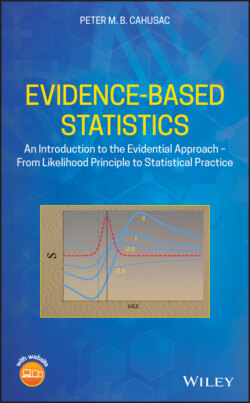Читать книгу Evidence-Based Statistics - Peter M. B. Cahusac - Страница 19
1.2.3 Types of Approach Using Likelihoods
ОглавлениеA key feature of the evidential approach is the use of LR based upon two values selected by the researcher. The LR then reveals which value is best supported by the observations. Typically, one of these values is the null hypothesis and the other a value believed to represent an effect size (see below Section 1.3). The use of explicit hypothesis values has the effect of strengthening the inferences made from the ratio of their likelihoods. This more useful approach can be used in many different types of analyses, notably in testing means with t, analysis of variance (ANOVA) using contrasts, correlation, in categorical data using binomial, Poisson, and odds ratio. Where precise hypothesis values cannot easily be specified, it is useful to use likelihood intervals to show which values are supported by the data.
When one of the chosen values is the MLE, for example the sample mean, then something called the maximum LR is calculated (see Section 2.1.5). This is equivalent to using p values since there is a direct transformation between it and a p value – they both measure evidence against a single value, usually represented by the null hypothesis. This can be useful in providing the maximum possible LR, and hence support, for an effect against another specified value such as the null.
